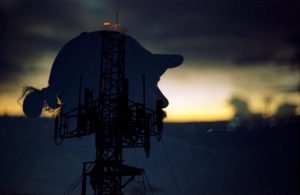Starlink: Revolutionizing Global Connectivity with Satellite Internet

Starlink: Revolutionizing Global Connectivity with Satellite Internet
Starlink is a satellite internet constellation developed by SpaceX, founded by Elon Musk. The project aims to provide high-speed, low-latency internet connectivity worldwide, especially in areas where traditional internet infrastructure is lacking. With its advanced technology and ambitious goals, Starlink is poised to revolutionize the way we access the internet.
At the beginning of the Starlink project, the focus was on creating a network of low-Earth orbit (LEO) satellites that could provide fast and reliable internet connectivity. The satellites are designed to be smaller and more efficient than traditional geostationary satellites, allowing for a larger constellation and faster data transfer rates. Each Starlink satellite is equipped with a Hall effect thruster, which uses electricity to propel the satellite and maintain its orbit.
How Starlink Works
Starlink uses a combination of satellite and ground technology to provide internet connectivity. The system consists of a network of LEO satellites, ground stations, and user terminals. When a user sends data through the Starlink network, it is transmitted to the nearest satellite, which then relays the data to the destination satellite. The data is then transmitted back to the ground station, where it is routed to its final destination.
The Starlink satellites use a radio frequency (RF) signal to communicate with the user terminals and ground stations. The RF signal is transmitted in the Ka-band frequency range, which provides high bandwidth and low latency. The satellites also use advanced beamforming technology to focus the signal and improve the quality of the connection.
Benefits and Impact of Starlink
Starlink has the potential to revolutionize global connectivity by providing fast and reliable internet access to underserved communities. The satellite internet constellation can reach areas where traditional internet infrastructure is lacking, such as rural or remote areas. This can have a significant impact on education, healthcare, and economic development in these communities.
Starlink can also provide backup internet connectivity during natural disasters or outages. The satellite internet constellation can provide a reliable connection when traditional internet infrastructure is damaged or destroyed. This can be especially important for emergency responders and critical infrastructure providers.
Challenges and Limitations of Starlink
While Starlink has the potential to revolutionize global connectivity, it also faces several challenges and limitations. One of the main challenges is the high cost of launching and maintaining the satellite constellation. SpaceX has launched thousands of satellites into orbit, and each launch requires significant resources and investment.
Another challenge is the issue of space debris. The large number of satellites in the Starlink constellation can contribute to the growing problem of space debris in Earth’s orbit. This can pose a risk to other satellites and spacecraft, and can also make it more difficult to launch new satellites in the future.
Conclusion
Starlink is a revolutionary satellite internet constellation that has the potential to provide fast and reliable internet connectivity worldwide. With its advanced technology and ambitious goals, Starlink is poised to make a significant impact on global connectivity. However, the project also faces several challenges and limitations, including the high cost of launching and maintaining the satellite constellation and the issue of space debris.
Despite these challenges, Starlink is an important step towards providing global connectivity and bridging the digital divide. As the project continues to develop and expand, it will be interesting to see how it impacts the way we access and use the internet.




